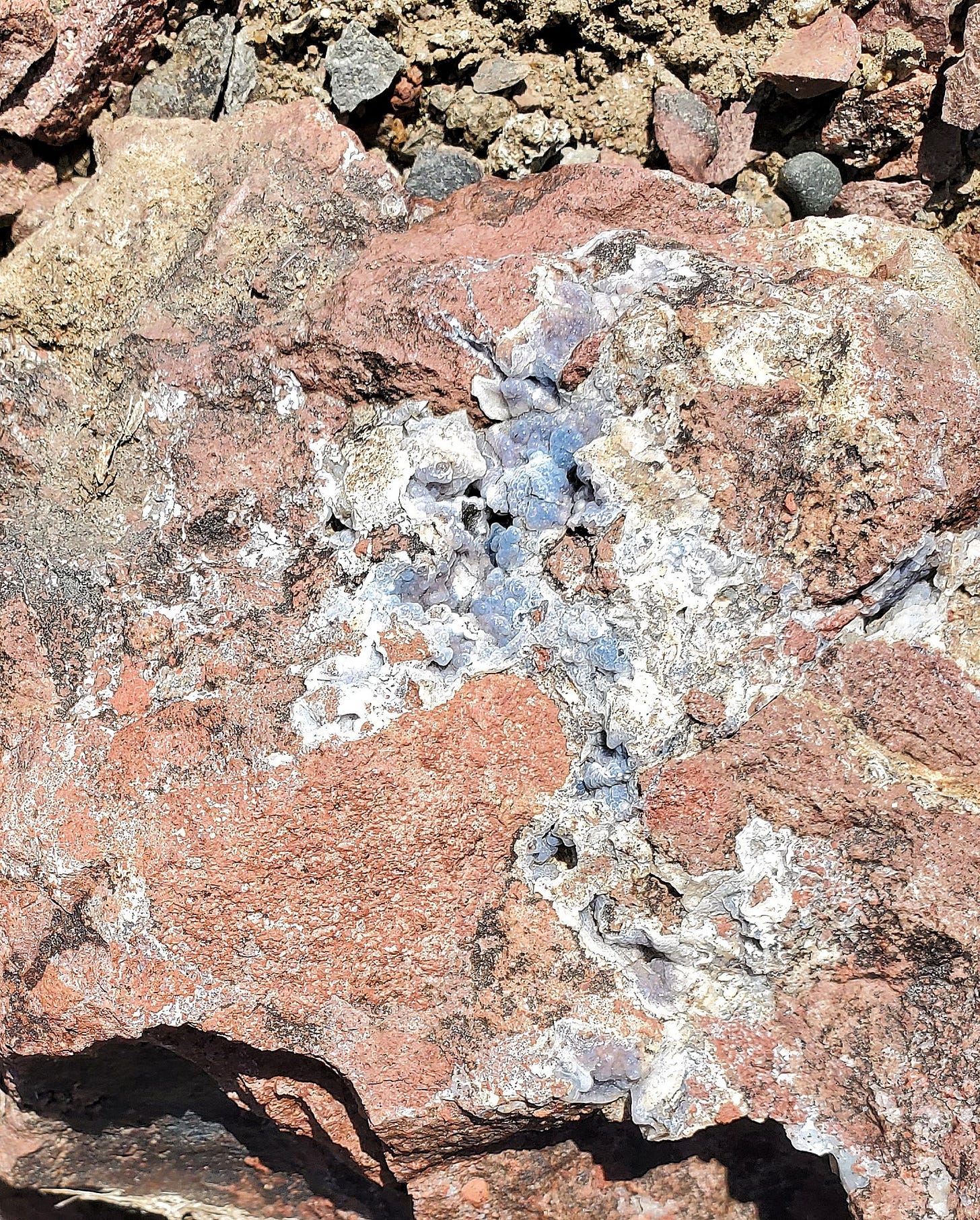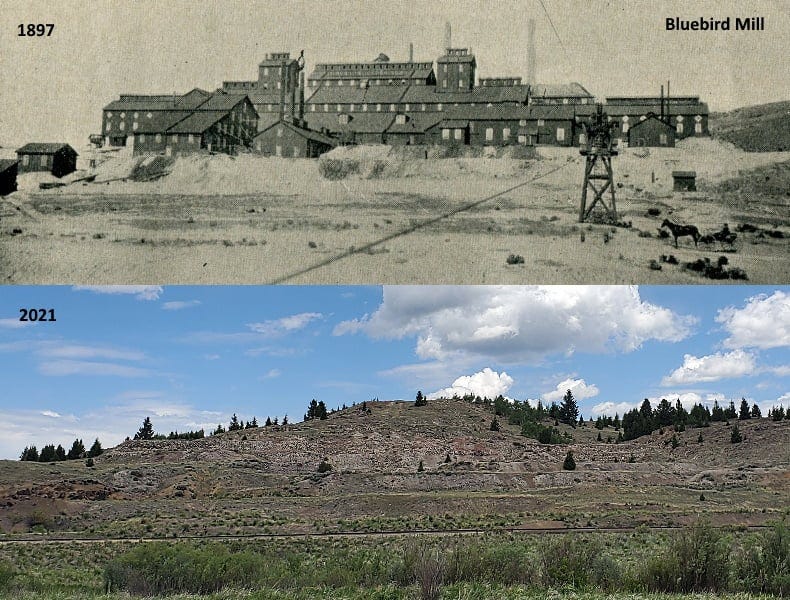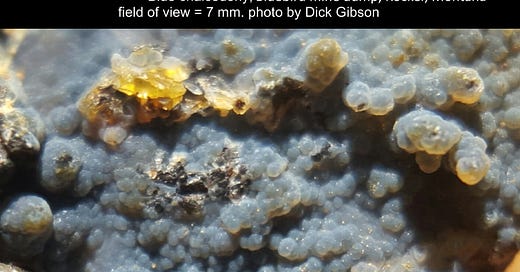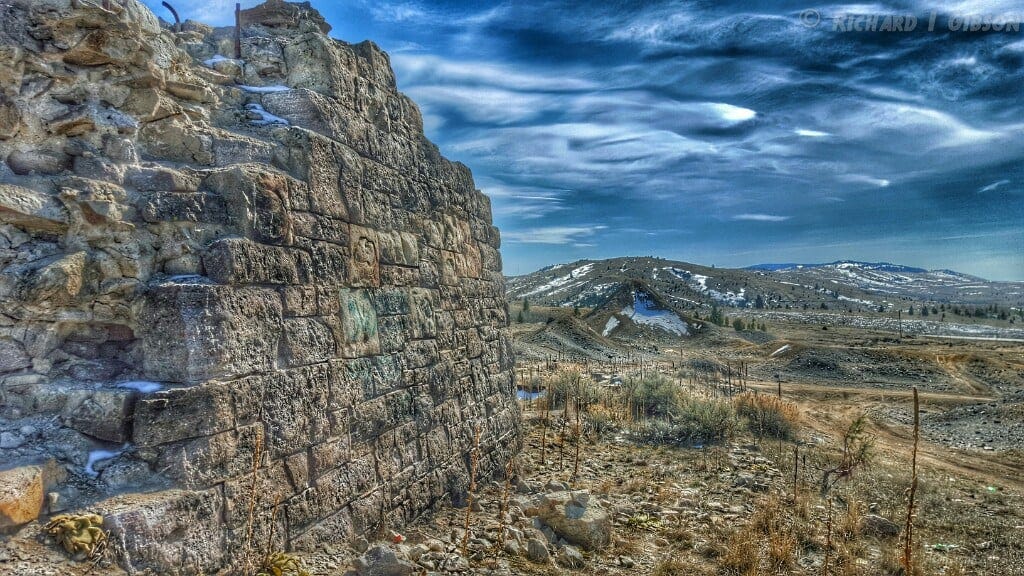Life in the USA is not normal. It feels pointless and trivial to be talking about small looks at the fascinating natural world when the country is being dismantled. But these posts will continue, as a statement of resistance. I hope you continue to enjoy and learn from them. Stand Up For Science!
Blue chalcedony, like the piece above from the Bluebird Mine west of Butte, Montana (Cat. No. 1194), can be blue for at least three reasons. It may have inclusions of something, which could range from bits of a copper mineral to ilmenite (titanium dioxide) to something else. But it’s more likely that this blue color is caused by one of two optical effects: Rayleigh scattering, the same effect that makes the sky blue, or the Tyndall effect, scattering in a colloid or other fine suspension.
Rayleigh scattering is dispersion of light into its constituent colors by particles much smaller than the wavelength of light. In the atmosphere, it is molecules that do the scattering, preferentially scattering the shorter blue wavelengths when the sun is overhead, or most anywhere except near the horizons. In chalcedony, it is the exceedingly tiny size of the quartz in the rock that would do it. Chalcedony is crystalline, not amorphous like some opal, though the silicon dioxide crystals (quartz) that comprise it are microscopic or submicroscopic but larger than individual molecules.
The Tyndall effect is what makes motorcycle smoke bluish. Blue eyes are also a result of the Tyndall effect, more so than blue pigmentation. In both cases shorter (blue) wavelengths of light are scattered preferentially owing to the sizes of the particles and spaces between them. Chalcedony is essentially a solid, crystalline colloid whose suspended particles cause a similar scattering resulting in a blue color.

The main difference between Rayleigh scattering and the Tyndall effect is particle size. Rayleigh scattering is a result of molecular sized particles much smaller than the wavelength of light (around 0.3 nanometers for the molecules, compared to around 400 to 750 nanometers for the wavelength of visible light), while the colloidal particles causing the Tyndall effect are much larger, close to the wavelength of light or a bit larger. To some extent, the shapes of the particles, their roughness, can also affect both of these phenomena.
I think the consensus is that generally, blue chalcedony is the result of the Tyndall effect, albeit certainly with some exceptions. The hints of orange color in transmitted light (as opposed to reflected light) on my specimen are also typical of the Tyndall effect, although the larger bit at upper left is just iron-stained quartz.
John Tyndall (1820-1893) was an Irish physicist noted for his work on magnetism, radiant heat, and glaciers in addition to optics. John William Strutt, 3rd Baron Rayleigh (1842-1919) was a British physicist best known for his studies of optical effects, but he received the Nobel prize in 1904 for his discovery of argon.
Chalcedony is named for the town of Chalcedon, now called Kadıköy, a district of Istanbul, Turkey, whence it was first reported by Agricola in 1546. The place name is ultimately from Phoenician “qart-ħadaʃt,” meaning "New Town."
I found this blue chalcedony a few years ago on a loose piece of float near the old dump of the Bluebird Mine northeast of Rocker, Montana, a major silver producer from about 1885 to 1891. The Bluebird mill yielded a remarkable 1.4 million ounces of silver in 1888 alone. The substrate for the chalcedony is mostly coarse quartz, probably a hydrothermal deposit in a cavity or fissure in the fine-grained Butte granite (aplite) that underlies the area.

Rocks containing galena (lead sulfide) and sphalerite (zinc sulfide) can be found around the Bluebird mine site as well. The early ore from the Bluebird was free-milling silver (mostly native silver), but it became less economic to produce when the silver found at greater depths was largely contained within the galena and sphalerite; the presence of lead and zinc meant the ore needed to be smelted, not just leached with cyanide to produce silver metal. But the Bluebird shut down over legal and ownership issues more than economics.
And yes, I know that a colloid is usually taken to mean a dispersed phase in a continuous phase, where the continuous phase is usually a gas or liquid. I’m using the word here in a broad sense, to imply a solidified material that was a colloidal dispersion of solid silica particles (quartz) in a liquid or perhaps gel (also silica). An analog would be cranberry glass, a man-made solid in which colloidal gold particles were dispersed in molten glass, then solidified.







Some new terms for me Richard. Thank you for the explanation!